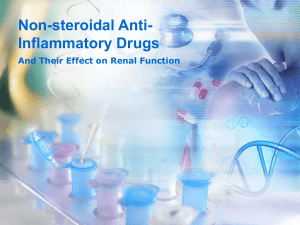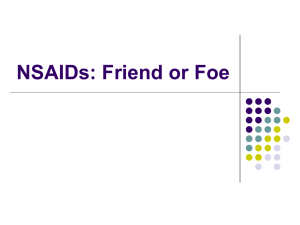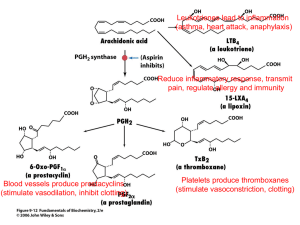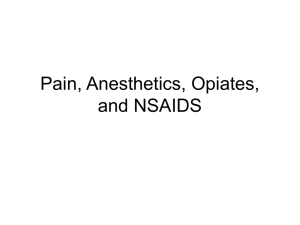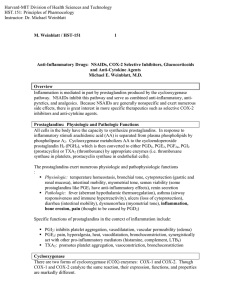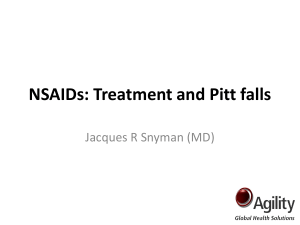View / pdf version of this correspondence
advertisement
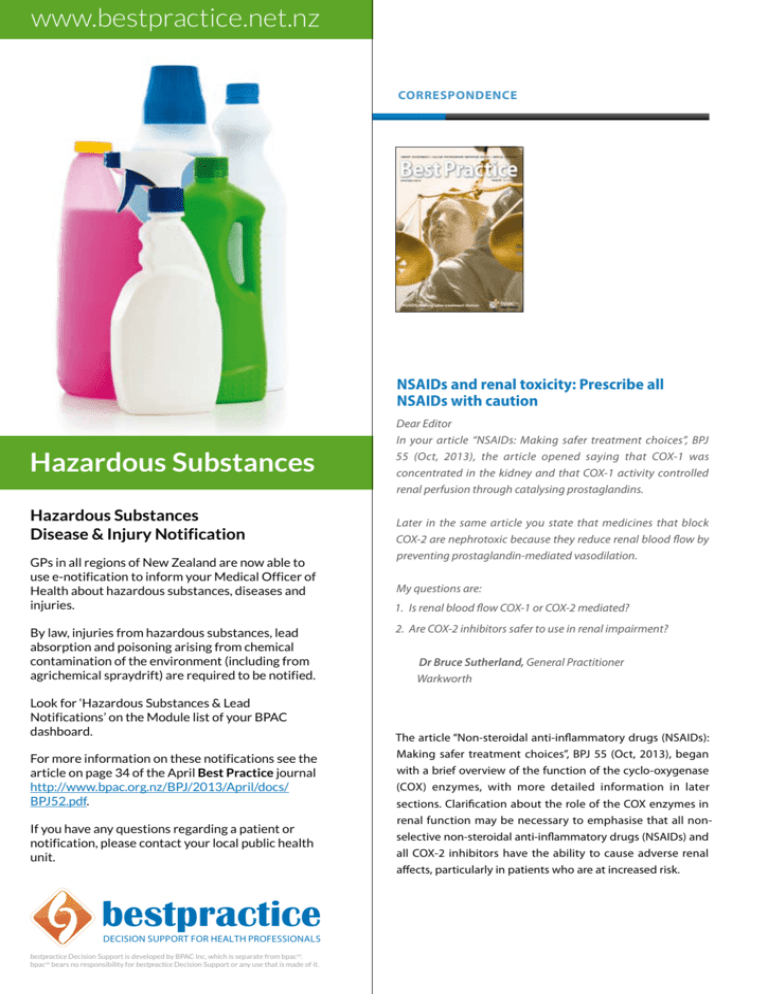
www.bestpractice.net.nz CORRESPONDENCE NSAIDs and renal toxicity: Prescribe all NSAIDs with caution Hazardous Substances Hazardous Substances Disease & Injury Notification GPs in all regions of New Zealand are now able to use e-notification to inform your Medical Officer of Health about hazardous substances, diseases and injuries. By law, injuries from hazardous substances, lead absorption and poisoning arising from chemical contamination of the environment (including from agrichemical spraydrift) are required to be notified. Look for ‘Hazardous Substances & Lead Notifications’ on the Module list of your BPAC dashboard. For more information on these notifications see the article on page 34 of the April Best Practice journal http://www.bpac.org.nz/BPJ/2013/April/docs/ BPJ52.pdf. If you have any questions regarding a patient or notification, please contact your local public health unit. bestpractice DECISION SUPPORT FOR HEALTH PROFESSIONALS bestpractice Decision Support is developed by BPAC Inc, which is separate from bpacnz. bpacnz bears no responsibility for bestpractice Decision Support or any use that is made of it. Dear Editor In your article “NSAIDs: Making safer treatment choices”, BPJ 55 (Oct, 2013), the article opened saying that COX-1 was concentrated in the kidney and that COX-1 activity controlled renal perfusion through catalysing prostaglandins. Later in the same article you state that medicines that block COX-2 are nephrotoxic because they reduce renal blood flow by preventing prostaglandin-mediated vasodilation. My questions are: 1. Is renal blood flow COX-1 or COX-2 mediated? 2. Are COX-2 inhibitors safer to use in renal impairment? Dr Bruce Sutherland, General Practitioner Warkworth The article “Non-steroidal anti-inflammatory drugs (NSAIDs): Making safer treatment choices”, BPJ 55 (Oct, 2013), began with a brief overview of the function of the cyclo-oxygenase (COX) enzymes, with more detailed information in later sections. Clarification about the role of the COX enzymes in renal function may be necessary to emphasise that all nonselective non-steroidal anti-inflammatory drugs (NSAIDs) and all COX-2 inhibitors have the ability to cause adverse renal affects, particularly in patients who are at increased risk. CORRESPONDENCE 1. Renal blood flow is mainly controlled by the vasodilatory action of prostaglandins produced by the COX-1 enzyme, which is concentrated in the vascular endothelium.1 However, the flow of blood to the kidney is also influenced by the activity of the COX-2 enzyme. COX-2 in the kidney largely functions to maintain water and electrolyte balance and if homeostasis is not maintained then renal perfusion can decrease.1 Studies also indicate that there is significant overlap between the function of the COX enzymes and that COX-2 also produces prostaglandins that can cause vasodilation of the renal artery.1, 2 2. Clinical trials have demonstrated that non-specific NSAIDs and COX-2 inhibitors have similar risk profiles for people with reduced glomerular filtration rate (GFR) and in people at risk of pre-renal failure.1 This is because the vasodilatory effect of COX-1 derived prostaglandins and the ability of COX-2 derived prostaglandins to maintain water and electrolyte balance is important to maintain renal function. Inhibiting COX-2 reduces the ability of the kidney to maintain homeostasis which increases the risk to the kidney further by reducing renal perfusion. It would have perhaps been clearer if it had been specified in the article that both COX-2 inhibitors and non-selective NSAIDs are potentially nephrotoxic. The statement “medicines that block COX-2 are nephrotoxic” was intended to convey the potential adverse effects of both types of NSAIDs, because both non-selective NSAIDs and COX-2 inhibitors block COX-2 activity. The statement was not meant to imply that any NSAID-induced renal toxicity was caused exclusively by inhibition of the COX-2 enzyme. It is important to remember that the use of either nonselective NSAIDs or COX-2 inhibitors is not recommended in people at increased risk of renal complications. It should also be kept in mind that the selectivity of NSAIDs is only relative. For example, meloxicam, a COX-2 inhibitor, mainly inhibits COX-2 at low concentrations but as the concentration of meloxicam increases adverse effects attributed to inhibition of COX-1 are experienced by patients.3 References 1. DeMaria A. NSAIDs, coxibs, and cardio-renal physiology: A mechanism based evaluation. Available from: www.medscape.org/ viewarticle/422939 (Accessed Nov, 2013). 2. Stichtenoth DO, Marhauer V, Tsikas D, et al. Effects of specific COX2-inhibition on renin release and renal and systemic prostanoid synthesis in healthy volunteers. Kidney Int. 2005;68(5):2197–207. 3. Singh G, Lanes S, Triadafilopoulos G. Risk of serious upper gastrointestinal and cardiovascular thromboembolic complications with meloxicam. Am J Med. 2004;117(2):100–6. We value your feedback. Write to us at: Correspondence, PO Box 6032, Dunedin or email: editor@bpac.org.nz For further information on the effect of NSAIDs on renal physiology see: NSAIDs, Coxibs, and Cardio-Renal Physiology: A Mechanism-Based Evaluation: Coxibs and Renal Physiology. Available from: www.medscape.org/viewarticle/422939_3 45
